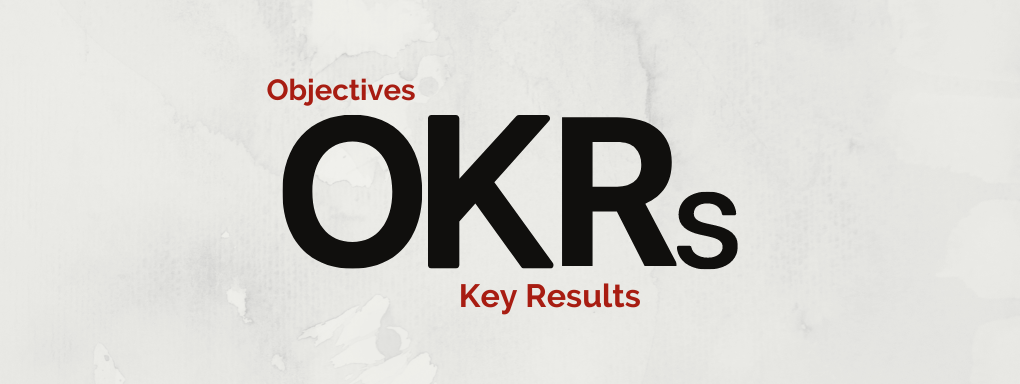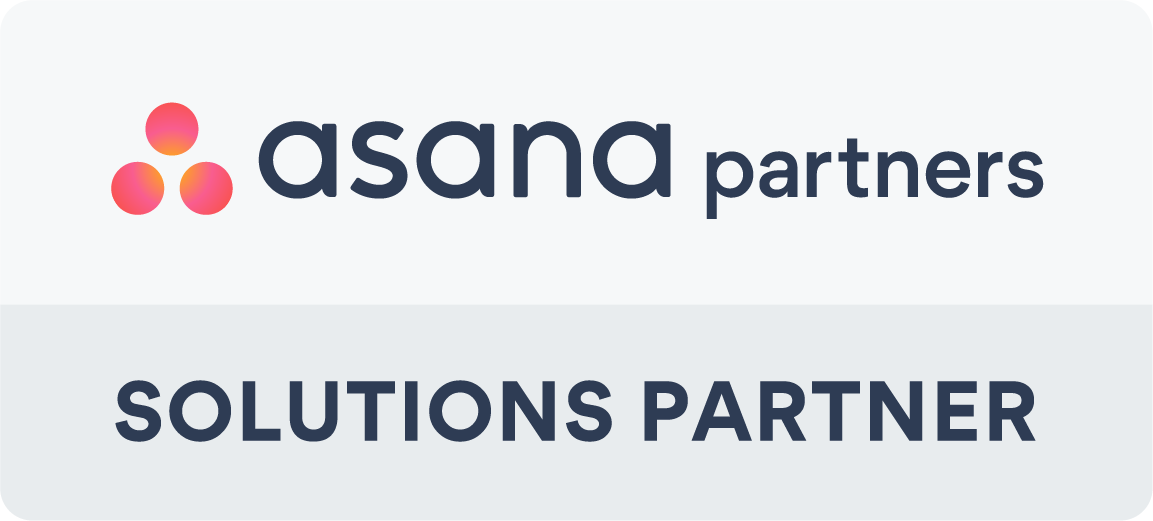BONUS DOWNLOAD: BE A BETTER LEADER WITH THE OKR PLAYBOOK (EBOOK)
Objectives and Key Results (OKR) is a unique goal system commonly used by companies within the technology sector such as Google, Spotify, LinkedIn, Airbnb and Twitter to create alignment and engagement around measurable goals. The system is not only just available for technological companies but is also available to track progress in other sectors such as retail, media, and financial services.
Google's methodological approach to goal setting
The distinction between traditional planning and OKR approach may seem confusing. In essence, the latter is regularly tracked and re-evaluated quarterly and can be seen as management by objectives. OKR is not a complex business goals system but a simple one with fast-cadence processes that engage each team's perspective and creativity.
One of the main benefits of creating alignment in an organisation is that it helps an organisation’s internal members have a tangible defined goal. One that ensures everyone will be on the same path, with clear priorities, continuously.
The original concept behind OKR originated from Intel and was dispersed to other Silicon Valley companies. Google later adopted the framework in 1999. Since then, it has helped with increasing Google's growth and reputation. The number of employees has surged, from 40 employees to 60,000 to this day.
What constitutes an OKR system?
The general partner of OKR, John Doerr, an erudite venture capitalist, who introduced Google to the system candidly explained his formula for setting goals:
Doerr’s Goal Formula:
I will ________ as measured by ____________.
To set up a goal, it is essential to describe what you will achieve and how you will measure its achievement. The critical words identified here are ''as measured by'' since the concept of measuring progress is what makes a goal a goal. Without it, there will only be desire.
By using Doerr's formula provides a better explanation of the structure of an OKR:
I will (Objective) as measured by (this set of Key Results).
As the above sentence implies, OKR has two components, the 'Objectives' and the 'Key Results':
- Objectives are qualitative descriptions of what you want to achieve. They are the building bricks to inspire and engage teams.
- Key Results are used as a set of metrics to measure your progress towards the Objectives. And for each Objective, 2-5 Key Results should be set.
“If it does not have a number, it is not a Key Result.”
Examples of how to use OKR and Key Results
Example One
For instance, suppose your organisation is looking to create an excellent customer service experience. For a plan to work, you need an Objective because there would be no way to measure progress without that.
This is where Key Results come in. The idea of setting up an excellent customer experience is to know how the experience can be measured. Using net promoter score and repurchase data are just some of the options that customer service teams could use, but these two alone might send the wrong message about your business. As a countermeasure, using Customer Acquisition Cost can mitigate that issue and increase customer satisfaction.
The complete example would be:
Objective: Create an Awesome Customer Experience
Key Results:
Improve Net Promoter Score from X to Y.
Increase Repurchase Rate from X to Y.
Maintain Customer Acquisition cost under Y.
Example Two
Suppose a team seeking ways to increase engagement with a digital service. Their main objective would be to satisfy their customers.
Key Results:
Reduce revenue churn (cancellation) from X% to Y%.
Increase Net Promoter Score from X to Y.
Improve average weekly visits per active user from X to Y.
Increase non-paid (organic) traffic from X to Y.
Improve engagement (users that complete a full profile) from X to Y.
Having Key Results contributes to a healthy, sustainable OKR. Every business wants to increase the weekly visits whilst wanting the weekly visits to be organic and expand marketing spend. A second team or company could use the same Objective with different Key Results.
Key Results are significant. Moreover, that define what we mean by ''Delight, our customers''.
What makes an OKR unique?
Each company has its way of interpreting and using OKRs. Additionally, some teams or company's prefer to tweak and adapt OKRs for creating different versions. There are, however, some core concepts:
Simplicity
Using OKR is a straightforward process. Companies adopt them to help reduce the time spent setting goals from months to days. As a result, these companies can invest their resources in achieving goals and not on developing them. They’re also perfect for including as part of performance reviews for teams and individuals.
Agile Goals
OKR takes an agile approach by using shorter goal cycles. This has many positive effects on a business. One good example is that it helps companies adapt and respond to change.
Transparency
OKRs primary purpose is to create alignment in an organisation. To do this, they have to be made public to all company levels. This visibility includes everyone having access to OKRs, especially the CEOs and helps focus on the principle of “measure what matters”.
Nested Cadences
OKRs are unique, but they understand that both tactics and strategies have different tempos since the latter tends to change much faster. To mitigate this issue, OKR adopts different rhythms:
- A strategic cadence with high-level, longer-term OKRs for the company (usually annual).
- A tactical cadence with shorter-term OKRs for the teams (usually quarterly).
- An operational cadence for OKR tracking results and initiatives (usually weekly).
Bidirectional Goal Setting
With traditional top-down cascading models, it can be time-consuming and a burden. A negative factor of using traditional top-down cascading models is that it does not add value. Laszlo Bock, Google’s former VP of People Operations, once said that:
“Having goals improves performance. Spending hours cascading goals up and down the company, however, does not. It takes way too much time, and it’s too hard to make sure all the goals line up. ”
In contrast to conventional cascading models, OKRs do not cascade. They do, however, use a market-based approach that is simultaneously bottom-up and top-down. For instance, when a company sets the strategic OKRs, each team should use them to draft their tactical OKRs.
Tactical OKRs are used to align the company strategy to the other teams. Around 60% of OKRs are set bottom-up in agreement with the managers in a typical company.
The tactical model helps improve engagement whilst simultaneously creating a better understanding of the strategy. It also enhances the process making it simpler and faster.
Ambitions Goals: Moonshots and Stretch Goals
The philosophy behind OKRs is that if a company is consistently achieving 100% of its goals, then those goals are too easy to achieve. Instead, the system focuses on ambitious goals. It believes in giving teams challenging goals, and these help companies rethink the way they work and how to reach peak performance.
And synonymous with OKR goals, Google too mentions them in the “Ten things we know to be true’’:
“We set ourselves goals we know we can’t reach yet because we know that by stretching to meet them, we can get further than we expected.”
OKR's ambitious goals are known as moonshots or stretch goals. It is recommended to achieve between 60-70% of them. However, this does not apply to all OKRs.
Some goals should be predictable. That is why it is crucial to understand the critical differences between moonshots and roof shots.
Decoupling Rewards
To enable ambitious goals, it is essential to know how to separate OKRs from compensation and promotions. It is just as important to let employees know that they will not lose money if they set ambitious goals.
Companies should reward employees based on their impact on the business. As Andy Grove, a former Intel CEO, once said:
“[OKR] should be just one input used to determine how well an individual is doing.”
Adopting OKRs
Adopting OKRs is not an event but a journey, and here is why. As in any cultural transformation, the notion of change does not happen instantly. But it is possible to modify the company's dynamics in a few months, aligning and engaging the teams. Furthermore, it would also be a good idea to customise OKR to suit your organisation, as this framework explains.
Always be aware that the OKRs and KPIs are different. An OKR is a strategic framework, whereas KPIs are measurements that can exist within a framework and do not stand alone.
Common OKR mistakes
1) Using OKR as a task list
If you are trying to add value to your business, use OKRs to measure that. Do not use OKR if you are delivering tasks. It is essential to understand the difference between Value-based and Activity-based Key Results.
2) Setting too many OKRs
This mistake is a typical result of doing the first step. Good OKRs list top priorities. It helps define what is most important and what needs to be focused on during that quarter. Regardless, if you are using Value-based Results, there needs to be a focus or much confusion amongst your team.
3) Not aligning your OKRs
OKRs can be perceived in many ways, but in essence, it is an alignment tool. Never set it in isolation. Discuss them with your teams and use them for employee engagement.
4) Set it and forget it
As the title suggests, do not forget your OKRs—schedule regular follow-through. OKRs can sometimes be set for the long term but also be sure to have quarterly OKRs that can be achieved and reviewed.
Tips and tricks on how to write effective OKRs
For Objectives:
- Writing Objectives should be simple, concise, short and easy to memorise.
- Objectives should not be boring. They can reflect the organisational culture and be informal.
For Key Results:
- Separate metrics from initiatives
- Set just a few of them, usually between 2 - 5 per objective.
Additionally, there are some useful tools to help you understand the goal system.
BONUS DOWNLOAD: BE A BETTER LEADER WITH THE OKR PLAYBOOK (EBOOK)




